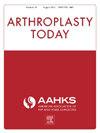初级保健患者参与患者报告的结果评估骨关节炎症状
IF 2.1
Q3 ORTHOPEDICS
引用次数: 0
摘要
背景:膝关节骨关节炎(OA)是美国常见的慢性疾病,严重影响生活质量和医疗保健费用。OA治疗在种族、民族和社会经济群体中的差异突出了联邦合格医疗中心(FQHCs)在管理治疗不足人群中的重要性。本研究评估了在FQHC初级保健患者中使用基于短信的系统收集患者报告的膝关节OA患病率和症状严重程度的结果(PROs)的可行性。方法一项多方法先导研究邀请223例FQHC膝关节OA患者通过文本完成膝关节疼痛和功能的PRO调查。没有回应的人会收到短信和电话提醒。研究人员评估了反应率、不完成的原因和患者对症状监测的看法。结果总体而言,24.7%的患者完成了PRO调查,其中英语为28%,西班牙语为17%。最常见的障碍是断开的电话号码。来自应答者和无应答者的定性反馈都显示出对持续症状监测的强烈支持(92%)。回应者认为调查用户友好,而非回应者指出了技术和信任相关的挑战。结论基于短信的PRO采集是fqhc患者膝关节炎症状追踪的一种可行且可接受的方法。虽然该方法可扩展且广受欢迎,但对患者进行有关pro目的的教育是必不可少的。建议改进沟通和无障碍战略,以增加参与,并充分利用专业人员在资源匮乏的环境中管理慢性病。本文章由计算机程序翻译,如有差异,请以英文原文为准。
Primary Care Patient Engagement With Patient-Reported Outcomes to Assess Osteoarthritis Symptoms
Background
Knee osteoarthritis (OA) is a common chronic condition in the United States, significantly impacting quality of life and health-care costs. Disparities in OA treatment across racial, ethnic, and socioeconomic groups highlight the importance of federally qualified health centers (FQHCs) in managing under-treated populations. This study assessed the feasibility of using a text message-based system to collect patient-reported outcomes (PROs) on knee OA prevalence and symptom severity among FQHC primary care patients.
Methods
A multimethod pilot study invited 223 FQHC patients with knee OA via text to complete a PRO survey on knee pain and function. Nonresponders received text and phone reminders. Researchers evaluated response rates, reasons for noncompletion, and patient perspectives on symptom monitoring.
Results
Overall, 24.7% of patients completed the PRO survey—28% among English speakers and 17% among Spanish speakers. The most common barrier was disconnected phone numbers. Qualitative feedback from both responders and nonresponders showed strong support (92%) for ongoing symptom monitoring. Responders found the survey user-friendly, while nonresponders noted technical and trust-related challenges.
Conclusions
Text message-based PRO collection is a feasible and acceptable method for knee OA symptom tracking in FQHCs. While the approach is scalable and well-received, patient education about the purpose of PROs is essential. Improved communication and accessibility strategies are recommended to increase engagement and fully leverage PROs for managing chronic conditions in low-resource settings.
求助全文
通过发布文献求助,成功后即可免费获取论文全文。
去求助
来源期刊

Arthroplasty Today
Medicine-Surgery
CiteScore
2.90
自引率
0.00%
发文量
258
审稿时长
40 weeks
期刊介绍:
Arthroplasty Today is a companion journal to the Journal of Arthroplasty. The journal Arthroplasty Today brings together the clinical and scientific foundations for joint replacement of the hip and knee in an open-access, online format. Arthroplasty Today solicits manuscripts of the highest quality from all areas of scientific endeavor that relate to joint replacement or the treatment of its complications, including those dealing with patient outcomes, economic and policy issues, prosthetic design, biomechanics, biomaterials, and biologic response to arthroplasty. The journal focuses on case reports. It is the purpose of Arthroplasty Today to present material to practicing orthopaedic surgeons that will keep them abreast of developments in the field, prove useful in the care of patients, and aid in understanding the scientific foundation of this subspecialty area of joint replacement. The international members of the Editorial Board provide a worldwide perspective for the journal''s area of interest. Their participation ensures that each issue of Arthroplasty Today provides the reader with timely, peer-reviewed articles of the highest quality.
 求助内容:
求助内容: 应助结果提醒方式:
应助结果提醒方式:


